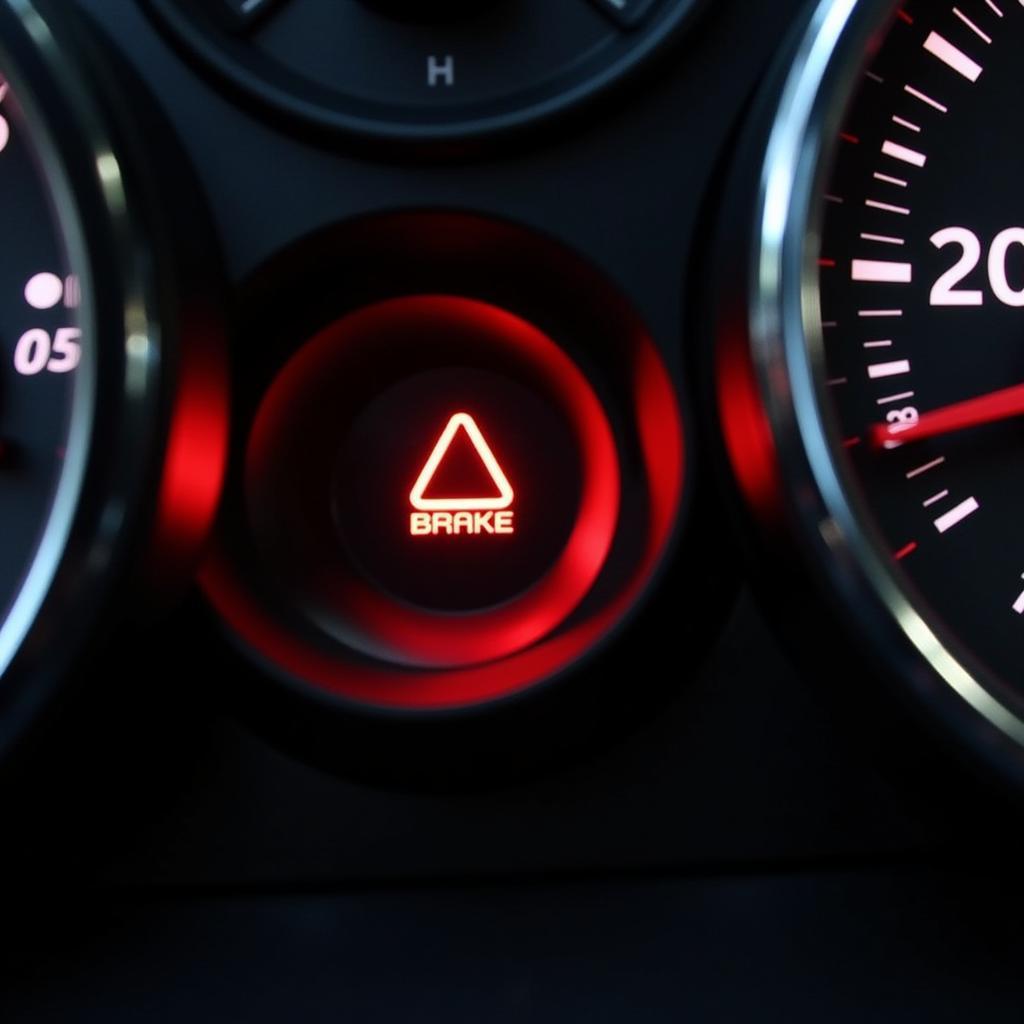The brake warning light on your 2009 Subaru Impreza dashboard is a critical safety feature that should never be ignored. When illuminated, it indicates a potential issue with your braking system that requires immediate attention. This comprehensive guide will walk you through the common causes, troubleshooting tips, and possible solutions to address this problem effectively.
Understanding Your Subaru Impreza’s Brake Warning Light
The brake warning light, typically a red or yellow circle with an exclamation mark (!) or the word “BRAKE” inside, can indicate several issues.
Here’s what it could mean:
- Low Brake Fluid: This is the most common culprit. Brake fluid is essential for transmitting force from your foot to the brakes. A leak or worn-out brake pads can lead to low fluid levels.
- Engaged Parking Brake: It’s easy to overlook, but sometimes the light simply means you haven’t fully disengaged the parking brake.
- Faulty Brake Light Switch: This switch activates your brake lights when you press the pedal. If faulty, it can also trigger the warning light.
- Worn Brake Pads: Brake pads have wear indicators that make a squealing sound when they’re nearing the end of their lifespan. The warning light might illuminate alongside this noise.
- ABS System Malfunction: Your Impreza’s Anti-lock Braking System (ABS) helps prevent wheel lockup during hard braking. If the ABS system encounters a problem, the warning light might come on.
Troubleshooting the Brake Warning Light
Before rushing to a mechanic, you can perform some basic checks:
- Check Your Parking Brake: Ensure the parking brake is fully released. Even a slight engagement can trigger the light.
- Inspect Brake Fluid Level: Locate the brake fluid reservoir under the hood (refer to your owner’s manual). Check if the fluid level is within the “MIN” and “MAX” markings.
- Listen for Unusual Noises: Pay attention to any squealing, grinding, or scraping sounds when applying the brakes. These could indicate worn brake pads.
When to Seek Professional Help
If the brake warning light remains illuminated after performing the basic checks, it’s crucial to seek professional help immediately. Driving with a compromised braking system is incredibly dangerous.
Here’s what a qualified mechanic will likely do:
- Diagnose the Issue: Using specialized equipment, they’ll pinpoint the exact cause of the warning light.
- Check for Brake Fluid Leaks: They’ll thoroughly inspect the braking system for any leaks in the lines, hoses, or calipers.
- Inspect Brake Pads and Rotors: Worn brake pads and rotors will be identified and replaced as necessary.
- Test the ABS System: The mechanic will run diagnostics on your ABS system to identify and rectify any malfunctions.
Preventive Maintenance for a Healthy Braking System
Preventing brake problems is always better than fixing them. Here are some preventive maintenance tips:
- Regular Brake Fluid Flush: Aim to flush your brake fluid every 30,000 miles or as recommended in your owner’s manual.
- Inspect Brake Pads Regularly: Check your brake pads at least every 15,000 miles, or more frequently if you drive in demanding conditions.
- Be Aware of Driving Habits: Avoid hard braking whenever possible, as it puts excessive strain on the braking system.
Conclusion
A glowing brake warning light in your 2009 Subaru Impreza is a signal you shouldn’t ignore. By understanding the potential causes and taking prompt action, you can ensure your safety and keep your vehicle in optimal condition. Remember, when it comes to brakes, prevention and timely maintenance are key.

